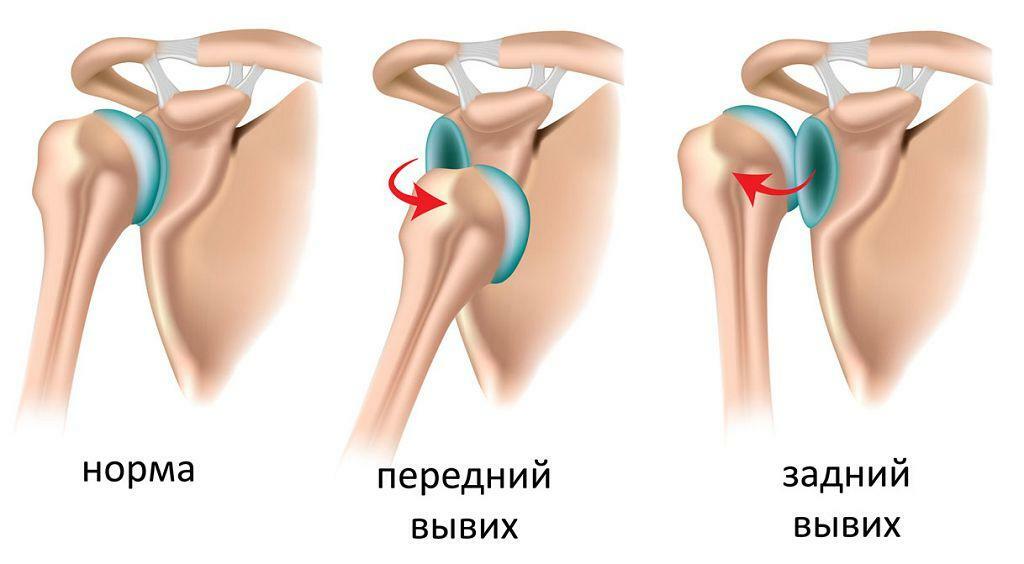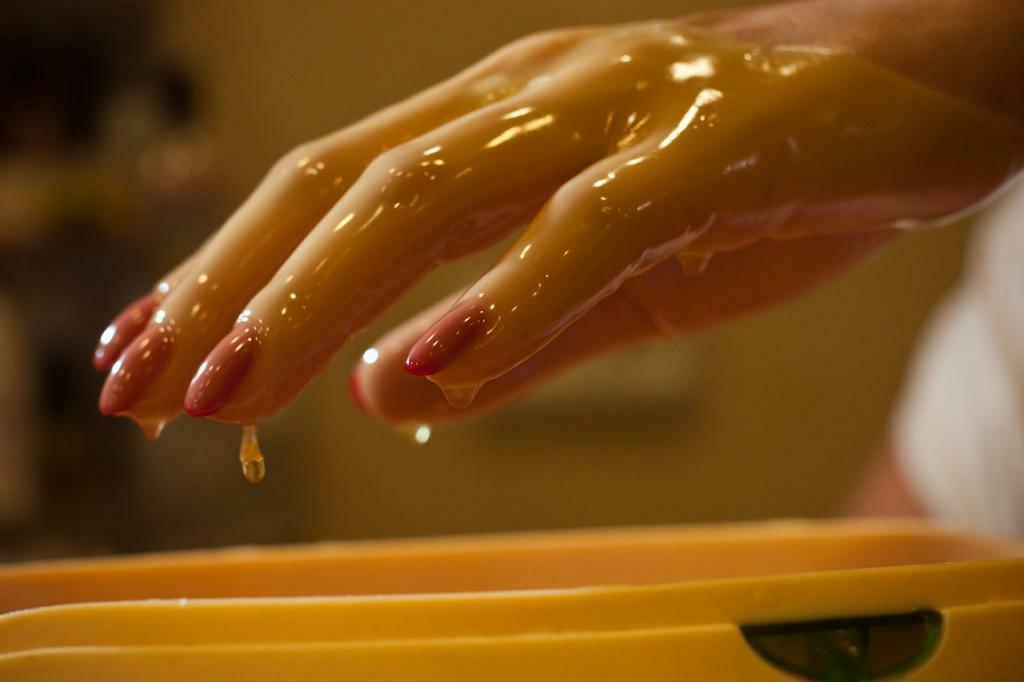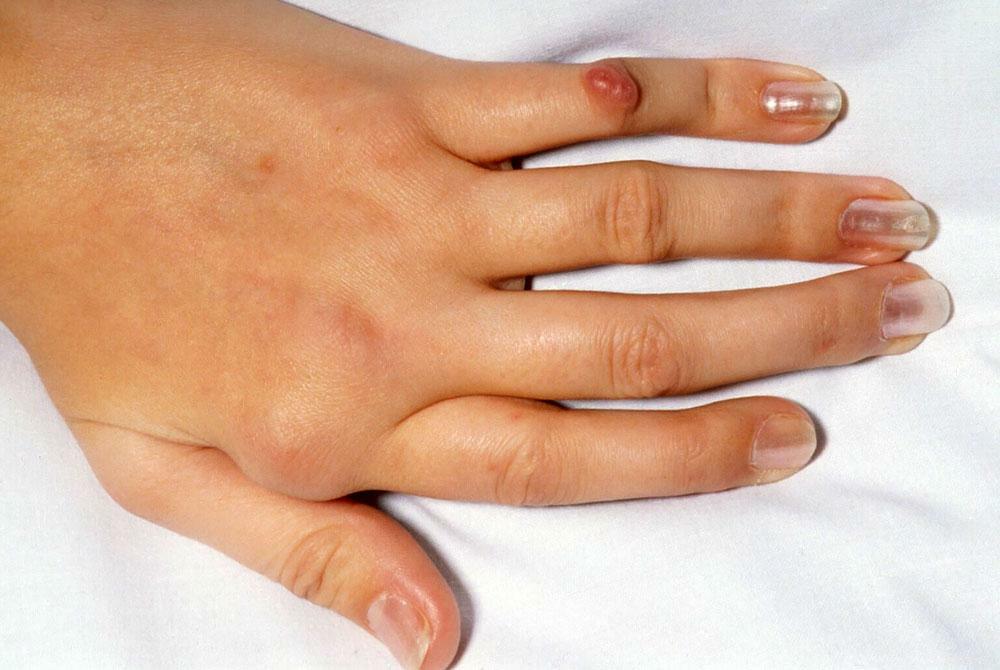Shoulder dislocation is a damage that occurs when the head of the humerus leaves the boundaries of the glnoidal cavity joining it.

Dislocation of the shoulder symptoms
Appears, as a rule, under the influence of unfavorable external influences in the form of strong shocks and various injuries. Next, you are invited to learn more about basic information about shoulder dislocations, their types, causes, characteristic symptoms and methods of treatment.
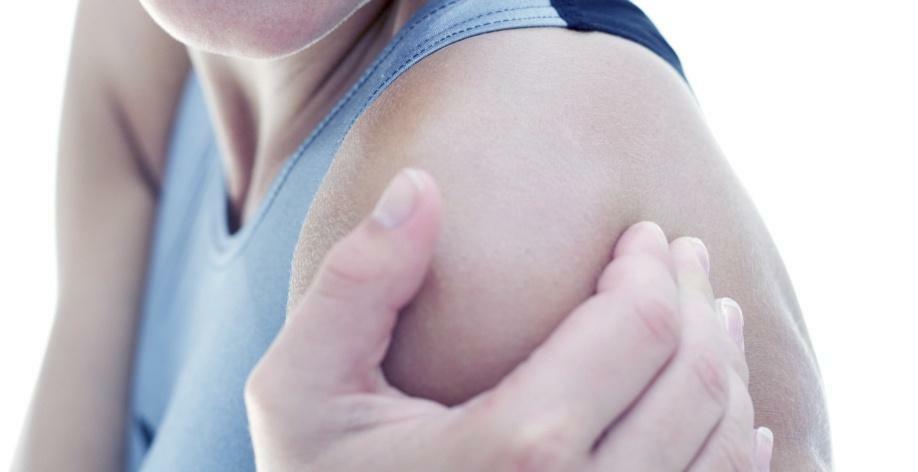
Damage of the shoulder and shoulder
Content of the material
- 1 Basics of the shoulder dislocation
- 2 Classification of the dislocations
- 3 The notion of habitual dislocation
- 5 Causes of the dislocation
- 5 Symptoms of dislocation
- 6 First aid
- 7 Treatment and rehabilitation
- 8 Useful exercises
- 8.1 Video - Dislocation of the shoulder symptoms
Basicinformation about shoulder dislocations
The dislocation considered can be of the front and rear type, as well as the lower one - this is determined by the direction of the displacementmentioned above bone.

Front and rear shoulder dislocation
- Front. Diagnosed in the vast majority of situations. The head of the bone is displaced in the forward direction. In case of such damage, the bone can go under the coracoid part of the scapula and move further to the front, penetrating the collarbone. In most cases, anterior dislocations are accompanied by a relatively insignificant violation of the structure of the cartilaginous roller.
- Rear. Relatively rare damage. It is accompanied by the departure of the cartilage cushion in the region of the location of the posterior part of the cavity. It is formed mainly in the case of a person falling on arms stretched out in front of him.
- Lower. It is accompanied by the care of the head of the humerus downwards. In the presence of such damage, it becomes impossible to lower the upper limb downwards - until the specialist fixes the damaged joint, the injured person can only hold his hand up.

Dislocation of the shoulder joint
Classification of dislocations

Classification of shoulder dislocations according to Kaplan: a - normal joint;b - subclavicular dislocation;c - sublingus dislocation with a detachment of the large tubercle of the humerus;d - subclavian;d - axillary;e - posterior
The lesions studied can have a congenital and acquired nature. The second is additionally classified for damage to non-traumatic and traumatic groups.
The category of non-traumatic disorders includes chronic as well as arbitrary dislocations. As for traumatic disorders, this category includes uncomplicated and complicated dislocations. The second group includes habitual and repeated dislocations, as well as chronic dislocations and fractures. In addition, there are open dislocations, accompanied by a violation of the integrity of the tendons and the neurovascular bundle.

Shoulder dislocation - photo
According to the average statistical data, about 60% of all cases of damage to the shoulder belt occur precisely in dislocations of traumatic origin. This frequency can easily be explained by the anatomical and physiological properties of the joint being studied: the size of the cavity and the head of the bone that connects to it do not coincide, the joint has a high density, the capsule is characterized by low strength - these and other accompanying factors contribute to an increased risk of dislocation.
The notion of habitual dislocation
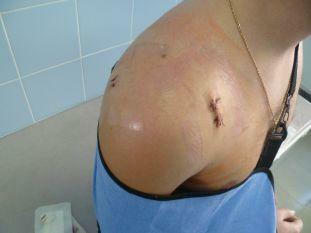
The habitual dislocation of
The appearance of this pathology is facilitated by fractures of the joint cavity, various kinds of integrity disorders of the neurovascular bundle and other factors. Most often, the problem develops on the basis of the dislocation of traumatic nature, provided that the rules of its treatment are not observed. As a result, the damaged tissues are restored with scarring, which causes a violation of the normal muscle balance. The joint becomes unstable, which is the main provoking factor with regard to habitual dislocation.
On the patient's side, the situation is as follows: some time ago a severe shoulder injury was obtained. After some time, dislocations began to occur repeatedly even in the absence of significant loads. In this case, the more repeated dislocations appear, the lower the load is enough to cause the next damage and the sooner it will pass.
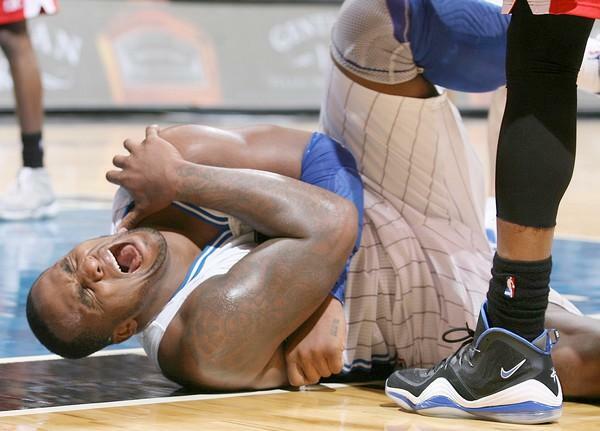
Repeated or habitual dislocations
There are cases when there were over 500 dislocations in the history of patients and they appeared daily, sometimes even several times. Such patients, as a rule, refused from medical help and adapted to independent repositioning of the joint, which is wrong, becauseit can cause all sorts of complications.

Direction of dislocation under anesthesia
Causes of appearance of dislocations
The appearance of such damages is primarily due to impacts in the corresponding area or, which is even more often, according to statistics, falling on arms stretched out in front of them. Also to the number of provoking factors it is necessary to attribute incautious rotational movements of the upper extremities with the application of efforts.

Sharp rotation and hand swapping can lead to dislocation of
. It is noteworthy that in people engaged in powerlifting and bodybuilding, shoulder dislocations are diagnosed relatively infrequently, but getting such injuries causes many problems and seriously threatens the possibility of further training in the usual mode.
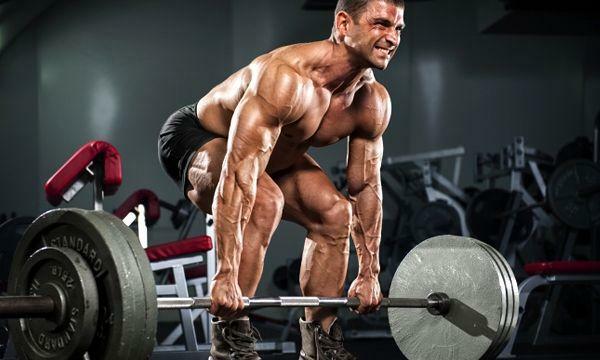
Powerlifters do not have dislocations often, but at the time they interfere with the sport of
. That's why athletes, whose lifestyle entails serious stress on the shoulders and the body as a whole, need to be especially cautious and attentive to their health.
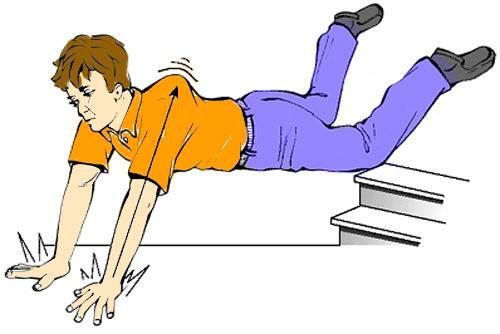
Typical dislocation mechanism - fall on the arm extended forward
Characteristic signs of dislocation
The symptoms of shoulder dislocations are described in the table.
Table. Signs of dislocation of the shoulder
| Symptoms | Description |
|---|---|
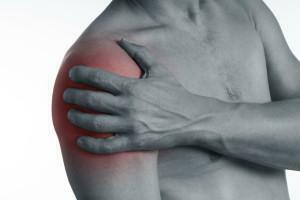 Painful sensations | Appear immediately at the time of injury and continue in the future. As a rule, they appear suddenly. There is a feeling that the shoulder is not located where it should be. |
 External changes | A damaged shoulder will look different than healthy. Most often, its external contours are violated. |
 Limited motion | Any careless movement of the damaged part of the body causes severe pain. The patient tries to keep the injured arm near the body to avoid unpleasant sensations. |
| Other signs of | For example, in the event of damage to the integrity of blood vessels or nerve damage, stitching pains, bruising, various numbness and other manifestations may occur. |
First aid

First aid with dislocations
First, the victim should stop moving the affected part of the body.
Secondly, you need to call an ambulance or promptly take the patient to the emergency room if he can walk alone.
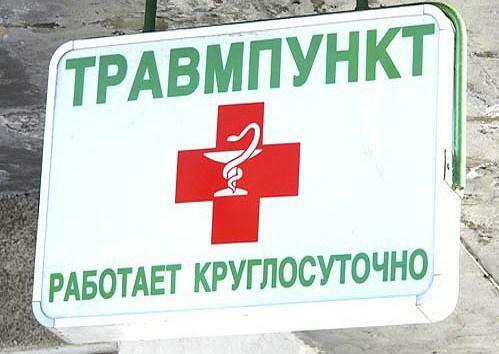
Urgent visit the emergency room
Third, an ice pack or any other cold object should be applied to the damaged area. After holding 15 minutes, you need to take a break, and then repeat the manipulation.
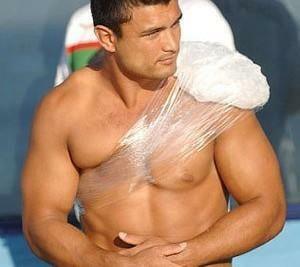
Cold compress
Fourth, it is necessary to exclude independent attempts to reinforce the damaged joint. If there is no possibility of promptly seeking help, the shoulder should be fixed with a bandage.

Fixative dressing
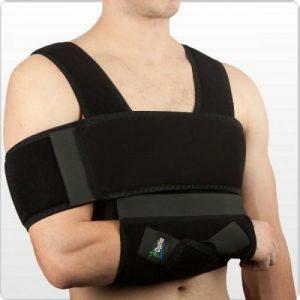
Bandage for shoulder joint
The doctor will assess the condition of the victim and send it to the X-ray to determine the type of dislocation and exclusion / confirmation of a fracture.
Treatment and rehabilitation
Treatment is carried out in several stages.
- The doctor pains the affected area with an injection of an appropriate drug, for example, novocaine.

Shoulder Injection
- The specialist restores the shoulder.

Direction of shoulder dislocation by Coker
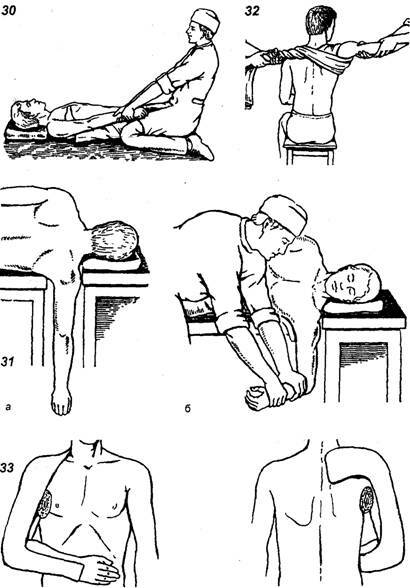
Direction of shoulder dislocation by Hippocrates-Cooper
This process is accompanied by rather severe pain. This is why an injection of an anesthetic is first done. If the dislocation can not be corrected manually, surgical intervention may be required. During the operation, the specialist directs the joint and ensures its fixation with the help of spokes and seams.
- Immobilization of the shoulder is carried out, contributing to faster recovery and minimizing the likelihood of relapse. The damaged area is immobilized by means of a dezo bandage, longet or other available means at the discretion of the doctor.

Dezo Bandage, technique of application
- Rehabilitation measures are carried out, the main task of which is to strengthen the ligaments and muscles, thereby significantly reducing the risk of re-emergence of dislocations. A variety of physiotherapy procedures, exercises, and massages are helpful.
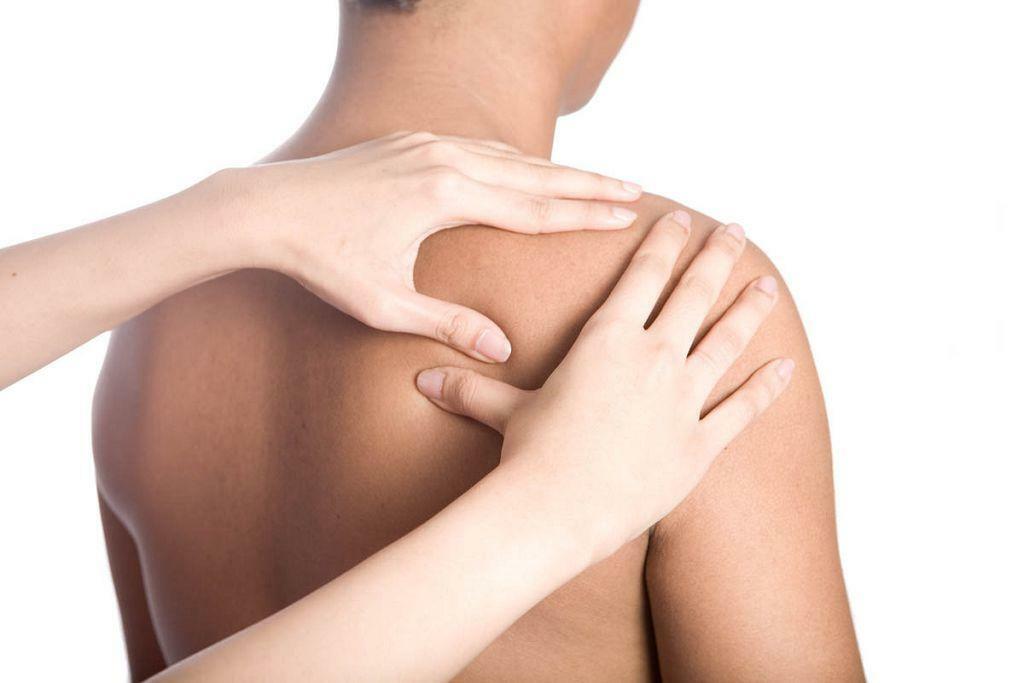
Massage
In some cases, you have to resort to surgery. Most often the need for this occurs with very severe injuries or the development of a habitual dislocation.
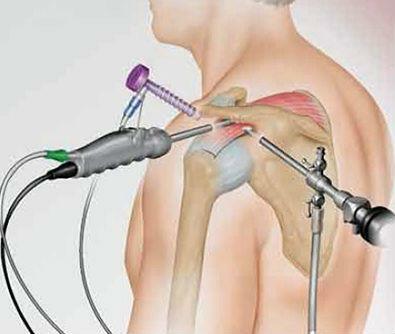
Shoulder arthroscopy
The choice of the specific treatment option remains with the attending physician. Any active activity and stress on the shoulders can be resumed only after the full restoration of damaged areas. Specific recommendations for future life will be provided by the attending physician, taking into account the individual characteristics of the patient's condition.
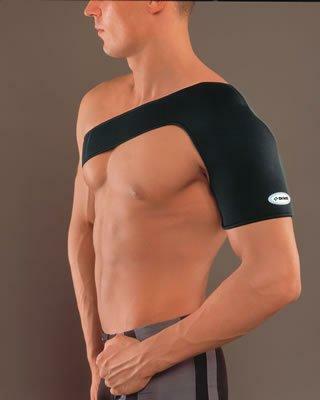
Treatment of shoulder dislocation
With regard to rehabilitation, the duration and severity of this process varies depending on the age of the patients and the characteristics of their vital functions. For example, healthy adults recover on average in 3-4 weeks. Athletes, before proceeding to a gradual return to the sport, will have to wait at least 1.5-2 months.

It is not recommended to athletes immediately after dislocation to load the shoulder
To start slowly to develop the joint can only after complete disappearance of edema and painful sensations. Selection of rehabilitation exercises is carried out by a doctor in an individual order with orientation to the severity of the dislocation and its features. You are invited to see the list of exercises that are used in most cases. Before performing any of these, be sure to consult with the treating specialist.
Useful exercises

Physical exercises

Joint development
Exercises are based on rotational and translational motion. The execution rate is slow. Any sudden movements are excluded. The proposed complex makes it possible to restore the tone of the damaged muscles and, on the whole, normalize the function of the shoulder joint. The optimal number of repetitions in each exercise is 5.
- Lower the upper limbs down, press against the body. Legs should be placed on the width of the shoulder girdle. Alternately lift your shoulders and lower them down.
- Circular motion shoulders. First, work in one direction, then in the opposite direction.
- Bend your hands in the elbows. Raise the brush to the shoulders. Do rotational movements with your hands.
- Raise your hands up and connect them "in the lock".Hold the "lock" over your head, make rotational circular movements to the left, then - to the right. If the performance of this exercise is difficult, first work one arm, first bending it at the elbow, then the second. With your free hand, support the worker.
- Squeeze your fists. Keep your hands in front of you and alternately bend and unbend them at the elbows.
- In turn, get your hands behind your back.
- Connect the palms so that the fingers are pointing upwards. With effort, press your palms against each other for a few seconds, then relax your hands.

Variants of exercises after dislocation of
You have received the basic information about a dislocation of the shoulder. Remember: the faster you contact a doctor in case of injury, the faster and easier will be the healing and recovery processes. Follow the recommendations of specialists, take care of yourself and be healthy!
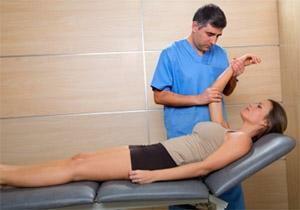
After a dislocation, contact a doctor

